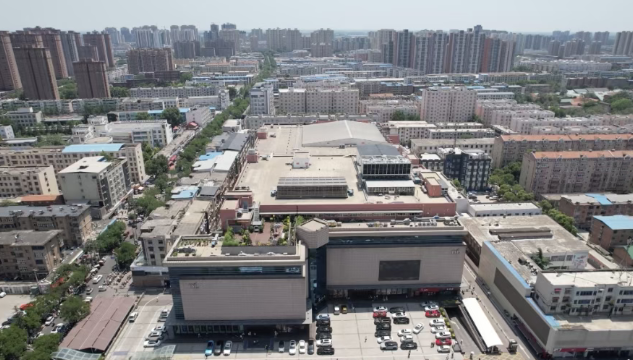Pancevo is an economic and cultural center in southern Banat, Serbia. In recent years, the city has embraced various smart technologies innovations to modernize its infrastructure and improve residents’ quality of life. We learned that Pancevo implemented Geographic Information Systems (GIS), smart benches, smart bus stops, and even a smart outdoor library. These technologies enhance urban living by providing efficient services, greater connectivity, and environmental sustainability. We visited Pancevo and spoke with an expert to learn how these technologies function and assess their condition.
Pancevo lies 18 km from Belgrade, at the confluence of the Tamish and Danube rivers. It covers 759 km² (263 km² in the urban area). The most recent census (2011) recorded a population of 123,414. Pancevo is the economic center of the South Banat District, home to many companies in the petrochemical, machinery, and construction industries.

Historical Heritage and Natural Beauty of Pancevo
Pancevo has a rich historical heritage that spans several centuries. Its strategic location made it a significant center during the Ottoman Empire and later under Austro-Hungarian rule. The city’s architecture reflects this diverse past, with landmarks like the 18th-century Church of St. George and the central square surrounded by Austro-Hungarian-style buildings. Since the 19th century, Pancevo has been an industrial hub. This blend of industrial development and history creates a unique urban environment.
Nature plays an important role in Pancevo’s identity, offering rural charm and ecological richness. The nearby Deliblato Sands is one of the largest sandy areas in Europe. It is a unique natural landmark with diverse flora and fauna. The city is also surrounded by two protected natural resources: the Ivanov’s Island natural monument and the Ponjavica Natural Park.
Smart Technologies in Pancevo: City Information Systems
We began studying the state of smart technologies in Pancevo by visiting various sites. The city has an official website where residents can access information about governance, programs, and events. The site integrates at least two information systems.
One system, System 48, was created in 2012. It allows the public to submit requests through various communication channels (telephone, SMS, email, or in person) to resolve communal issues, connecting citizens with the city’s administration.
Another system, introduced in 2002, monitors air pollution continuously. Four measuring devices are located around the city, and air quality data is available online. This data used to be displayed on a monitor in the City Administration Hall, but the monitor is currently not functioning.

Geographic Information System and Smart City Development in Pancevo
One of the cornerstone technologies in Pancevo is the Geographic Information System (GIS), which enables digital mapping and analysis of urban features like roads, utilities, and public services. The GIS provides city planners, officials, and residents with a comprehensive view of the city’s infrastructure, making urban planning and decision-making easier. However, after an initial period of success, the development and implementation of GIS have faced delays. Significant funding is needed to improve staff skills and educate citizens. Currently, the GIS website cannot be accessed safely.
Another site, created by the “Pansej” Association, was developed to support the city’s smart development. Although the initiative is interesting, the site offers very limited options.
Smart Services and Technologies in Pancevo
Several years ago, the City of Pancevo, Telekom Srbija, and Ericsson signed a cooperation protocol, allowing citizens to use “smart services” like ecoBus and busTracker. EcoBus operates on an interactive map, available via mobile phone or website, displaying real-time data on air quality, temperature, pressure, and humidity. busTracker shows the exact location of buses on the city map, along with the arrival time of the next vehicle. However, there is no evidence that this project is currently operational.

While walking around the city, we observed elements of smart solar technology, including smart bus stops, smart benches, internet distribution points, and an outdoor smart library in Pancevo’s park. Upon closer inspection, we found that many of these technologies were not in good condition, and the internet signal was weak. While walking around the city, we observed elements of smart solar technology, including smart bus stops, smart benches, internet distribution points, and an outdoor smart library in Pancevo’s park. Upon closer inspection, we found that many of these technologies were not in good condition, and the internet signal was weak. We were accompanied by Nikola Djordjević, the chairman of the “Pansej” Association, who kindly agreed to give us an interview.
The Struggles to Maintain Smart Technologies
Pancevo’s adoption of smart technologies has the potential to greatly enhance urban life. However, the city faces ongoing challenges in maintaining these systems. The rapid pace of technological development, combined with insufficient resources for upkeep and repair, has hindered many smart innovations from reaching their full potential.
Several factors contribute to these maintenance issues. First, the city lacks specialized staff with the necessary technical skills to maintain and repair the technologies. Although Pancevo has made efforts to train employees, ongoing education in the fast-evolving field of smart city technology remains a challenge.
Smart benches, bus stops, and libraries require continuous updates, software management, and hardware replacements, all of which come at a cost. In a city like Pancevo, with budget constraints, these expenses can become unsustainable.
Vandalism also poses a problem. Although these smart installations aim to improve public spaces, they can become targets for individuals who may damage or deface them.
Challenges in Pancevo’s Smart City Efforts
Pancevo’s efforts to become a smart city aimed to bring valuable innovations to residents, such as GIS, smart benches, and interactive libraries and bus stops. These technologies can improve public services, enhance connectivity, and make the city more sustainable. However, the city’s experience shows that introducing smart technologies comes with challenges. Maintaining these systems in good working condition underscores the importance of planning for long-term sustainability.
Without proper funding, expertise, and community support, even well-intentioned smart city projects can fall short of their goals. The struggle to keep these technologies operational highlights the need for continuous investment in both infrastructure and human resources to ensure their effectiveness.
Pancevo’s experience mirrors the broader challenges faced by cities in the Western Balkans in developing smart cities. These challenges include limited financial resources, outdated infrastructure, governance issues, a shortage of skilled workforce, environmental concerns, and resistance to change. We will explore these challenges at the regional level in our upcoming publications.


